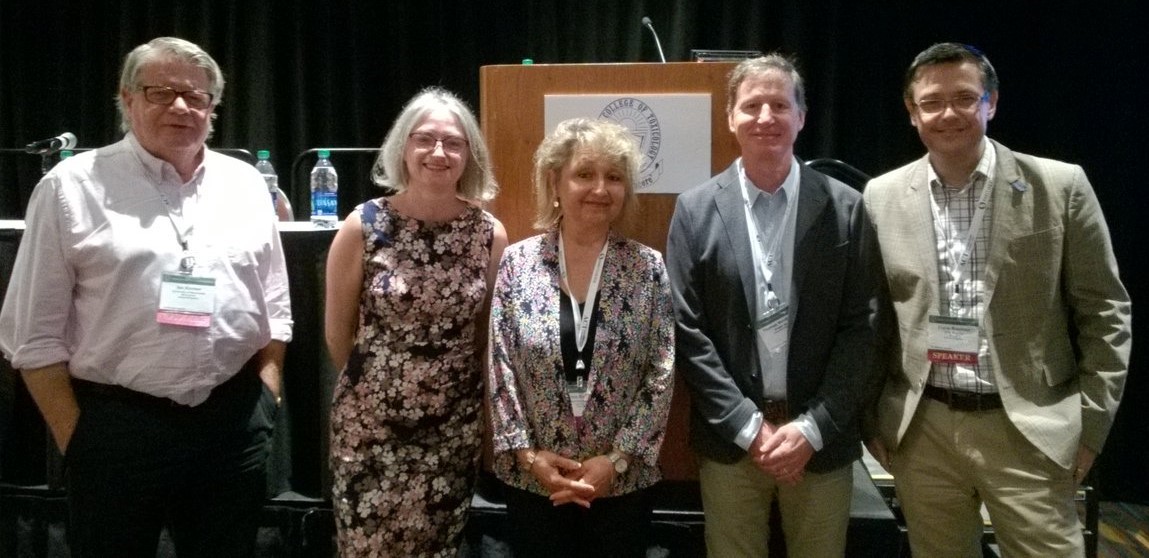Read our reports from international NC3Rs toxicology symposia

The NC3Rs toxicology and regulatory sciences team works to advance the 3Rs within chemical and pharmaceutical toxicity testing, through highlighting our own programmes as well as those of other organisations and consortia.
Team members regularly contribute to international scientific meetings as chairs, invited speakers or poster presenters. Reports from two NC3Rs-hosted symposia, which brought together delegates from around the world, have recently been published.
Replacing acute toxicity animal tests for chemicals
The acute toxicity ‘six-pack’ is a suite of tests providing information on health hazards likely to arise from short-term exposure to chemicals. These tests rely heavily on the use of mice and rats, with some involving high levels of suffering or death as an endpoint.
In August 2017 the NC3Rs hosted a one-day workshop, Towards Global Elimination of the Acute Toxicity ‘Six-Pack’, as a satellite meeting to the 10th World Congress on Alternatives to Animal Use in Seattle, USA. The workshop brought together 45 delegates from industry and regulatory agencies in 12 countries and was held in collaboration with the European Union Reference Laboratory for Alternatives to Animal Testing (EURL-ECVAM) and the US National Toxicology Program Interagency Center for the Evaluation of Alternative Toxicological Methods (NICEATM).
Delegates discussed the progress made internationally towards the acceptance of suitable non-animal alternatives to the acute toxicity ‘six-pack’, as well as barriers to adoption. The workshop report, published in Regulatory Toxicology and Pharmacology, summarises the presentations and subsequent discussions. It concludes that global harmonisation of requirements and acceptance of data between regions are the remaining challenges that must be addressed before the acute toxicity ‘six-pack’ can be replaced with non-animal methods.
The appropriate use of animals for drug development
Many thousands of animals such as mice, rats, dogs and non-human primates are used worldwide each year to test the safety of potential new medicines. This is intended to protect clinical trial participants and ultimately patients, but often the animal data do not predict adverse effects observed in humans. There is a long history of companies sharing experience, data and new approaches to improve the predictivity and human-relevance of data packages, which can ultimately lead to reductions and refinements in animal use.
We have worked with industry consortia such as IQ-DruSafe, the European Federation of Pharmaceutical Industries and Associations and Biosafe to investigate the appropriate use of different species of animals in nonclinical toxicology studies. In November 2018 we organised a symposium, Integration of consortia recommendations for justification of animal use within current and future drug development paradigms, at the American College of Toxicology (ACT) 39th Annual Meeting in Palm Beach, USA. This symposium brought together scientists and regulators contributing to these three consortia, as well as our own activities.
This review of the symposium, published in the International Journal of Toxicology, considers whether the recommendations of the different consortia can be aligned into feasible strategies for improving drug development. It highlights four projects that discuss the use of different animal species within toxicity studies and opportunities to reduce animal use without compromising human safety.
Stay up-to-date with our work
Sign up for the Tox News e-newsletter for regular updates from the NC3Rs toxicology and regulatory sciences programme, including upcoming symposia at international toxicology conferences, events, publications, funding opportunities, and relevant CRACK IT Challenges and Solutions. You can also find out more about our activities via our resource hub.

ACT session speakers L-R: Ian Kimber, chair (University of Manchester); Helen Prior (NC3Rs); Virginie Boulifard (Ipsen); Tom Monticello (Amgen) and Frank Brennan (UCB).
